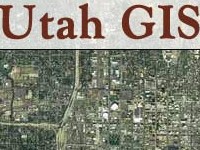March 5, 2008 -- When representatives from the Library of Congress and state agencies from Kentucky, North Carolina and Utah met in Salt Lake City in late January 2008, it wasn’t to take advantage of the excellent skiing. It was a different kind of slippery slope the participants were interested in: helping state governments avoid the slippery slope of digital information obsolescence.

Salt Lake City was the site of the project kick-off meeting
The Salt Lake City meeting was the kick-off for the Geospatial Data Exchange Network for Preservation (GDENP), one of four Library-supported multistate projects concentrating on the preservation of state government digital information. GDENP brings state archivists and geospatial program managers together to build a collaborative network for preserving significant geospatial information.
Digital geospatial information consists of digital data and its associated attributes that identify geographic locations and characteristics of natural or constructed features and boundaries on the earth. Such data resources include geographic information system data sets, digitized maps, remote sensing data resources (such as digital aerial photography), and tabular data sets corresponding to geographic characteristics. It is estimated that 80 percent of all government data has some kind of geospatial component. Geospatial information is especially important to state governments, as they are estimated to maintain twice the volume of geospatial data as the federal government.
State libraries and archives traditionally have managed, preserved and provided public access to significant government information in paper form, and their duty extends to the digital realm as well. However, state libraries and archives are still learning how to preserve geospatial information with archival value. At the same time, state geospatial agencies are largely oriented to providing current information and are just beginning to understand the value of their older data. These complementary missions and skill sets provide opportunities for collaborative learning between the organizations, one of the chief goals of the Library’s involvement. The Salt Lake City meeting provided the first opportunity for all project participants to share information with other states on their archival practices and geospatial programs.
Steve Morris, the head of Digital Library Initiatives at North Carolina State University, opened with an overview on the issues facing each of the partners. He explored some of the risks to digital geospatial data and the archiving challenges facing geospatial information curators. He also touched on the different technical and organizational approaches to archiving and preservation undertaken by his earlier Library-funded project, the North Carolina Geospatial Data Archiving Project (NCGDAP) (external link), as well as approaches explored by other organizations.
The state partners then made a series of presentations highlighting the geospatial information landscape in their respective states. The presentations were made jointly by representatives from both the archival and geospatial agencies, highlighting the baseline of collaboration in each state and presenting opportunities and ideas for the other state partners to explore.
The face-to-face discussion during the two-day meeting helped the partners prepare their scope of work for the next two years. The partners will concentrate on developing knowledge exchange networks within and among the several states and will work to establish baseline knowledge about digital preservation across the records retention and geospatial communities.
Further information on all the multistate partnerships can be found at Multistate Government Digital Information Program Portal.
